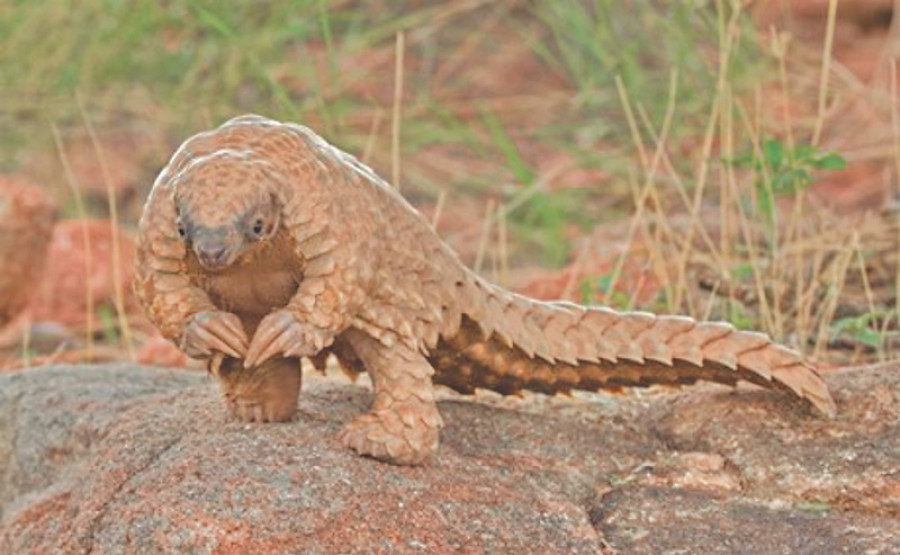National
Nepal’s 43 districts home to pangolins
Forty three districts in Nepal are home to pangolins, an endangered species, according to a new study.
Rastriya Samachar Samiti
Forty three districts in Nepal are home to pangolins, an endangered species, according to a new study.
Often called scaly anteaters, pangolins, the world’s most hunted animal, are earlier said to be found in 12 districts of the country.
The new data was made public after conducting national pangolin census. The Mammal Protection and Research Centre with the support from Hariyo Ban Programme had conducted the census.
This is the first time such a survey was carried out.
However, we still do not know the exact number of pangolins in the country, said Shanta Raj Gyawali, bio-diversity protection coordinator of the Hariyo Ban Programme. “We plan to carry out further study to find out the total number of the endangered mammal in the country.”
The study has also pointed at the need for giving due attention to protecting pangolins found living outside the community forests. Poaching, lack of public awareness, forest fire and encroachment of forest area are some of the risks that pangolins face, said Tulasi Laxmi Suwal, chairperson of Mammal Protection and Research Centre.
According to Krishna Prasad Acharya, director general of the Department of Forest, the government has put pangolins on the list of highly endangered species. The list also includes tiger, rhino, cheetah, bear, red panda and musk deer.
A programme has also been initiated to work onprotecting pangolins outside the national park area.
Five facts about the world’s most hunted animal
- There are eight species of pangolin: From one extant family, Manidae, there are eight species of pangolin still in existence worldwide, as well as several extinct species over their 80 million year evolution
- A pangolin’s tongue can be longer than its body: When fully extended, a pangolin’s tongue can be over 40 centimetre long, and starts deep in the chest cavity. Pangolins do not have teeth and are unable to chew. So they use their sticky tongues to collect insects
- The only mammals in the world covered in scales: The pangolin’s large scales are made of keratin, the same material of which our fingernails, rhino horns and bird talons are made—and account for 20 percent of its weight. The scales are very hard and protect pangolin against animal predators, yet in traditional Chinese medicine are dried and roasted as a method of relieving palsy, stimulating lactation and draining pus. As a result, pangolin scales can sell on the black market for over $3,000 a kilogram, and have even been used to make coats
- The name means ‘something that rolls up’: The ground pangolin got its common name from the Malay (the national language of Malaysia, Brunei and Indonesia) word ‘pengguling’, meaning ‘rolling up’, in reference to the animal’s defence mechanism of rolling into a tight, near-impenetrable ball when threatened. Unfortunately, this practice makes it even easier for humans to capture and smuggle them, as hunters can simply pick up
- Nobody knows how long they live: It is presumed that pangolins have a lifespan of 20 years in the wild, since the oldest recorded pangolin lived for 19 years in captivity. The creatures are very rarely found in zoos. However, as time spent in captivity tends to bring about stress, depression and malnutrition, leading to early death. As such, it is unknown how long a pangolin can live for
(Agencies)




 11.12°C Kathmandu
11.12°C Kathmandu





.jpg&w=200&height=120)









